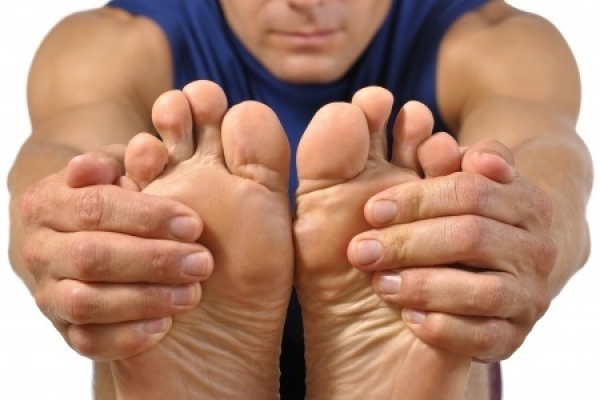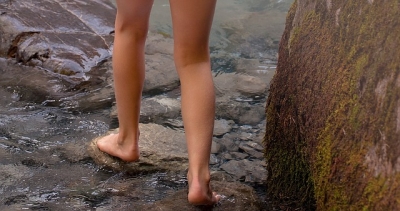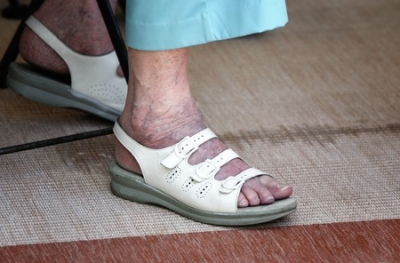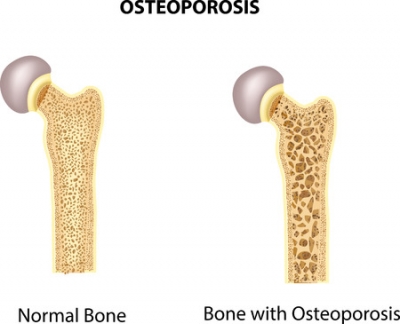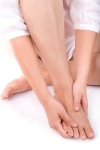Connect With Us
Blogs
Blog
Children categories
June is a month for celebrating men! At Superior Foot & Ankle Care Center, we want to recognize Men’s Health Month by highlighting some foot infections that afflict men. Studies show that men are less likely to be proactive and diligent about getting medical care. Encourage the men you love to get foot problems treated promptly by our podiatrists, Dr. Victoria M. Foley or Dr. Constance Ornelas. Below are some common podiatric issues men face.
- Haglund’s Deformity—while this condition, known as “pump bump,” it frequently affects men as well as women. Haglund’s deformity is a bony enlargement at the back of the heel that can become inflamed and irritated from the friction of stiff dress shoes and other footwear rubbing up against it. Bursitis can also develop because of Haglund’s deformity. The foot doctor will recommend shoe modifications, including changes in style and heel lifts or pads to help reduce friction. Icing and anti-inflammatory medications may be prescribed to relieve initial pain and inflammation.
- Gout—this painful, arthritic condition that usually strikes the joint at the base of the big toe is seen most often in men, ages 40-60. It is caused by too much uric acid in the body, which crystallizes in the joint. There are several potential sources of gout, and the podiatrist will help men who have suffered a gout attack before tracking down the cause. In many cases, certain foods can trigger an attack, and gout patients may need to avoid shellfish, red meat, alcohol, and rich sauces.
- Fungal Infections—regular exercise is a key component of a healthy lifestyle, but if the gym or community pool is the work site of choice, it’s essential to keep feet covered to avoid fungal infections like athlete’s foot and fungal toenails. These are passed on by direct contact. Places where people usually are barefoot and that are moist and warm are prime breeding grounds.
- Plantar Fasciitis—one of the most frequent causes of heel pain is plantar fasciitis. The plantar fascia is a long band of tissue that stretches along the bottom of your foot. If it becomes inflamed, heel pain may result. Flat feet and poorly fitting or worn out shoes are one common cause of inflammation.
Encourage your man not to ignore foot and ankle pain. Instead, make an appointment at our Long Beach office today by calling: (562) 420-9800 and get treatment before the problem worsens.
It’s a sad fact that 74% of overweight Americans have foot problems. So, while you may wonder what the connection is, at Superior Foot & Ankle Care Center, we know there is a direct correlation between being overweight or obese and the health of your feet. It’s easy to see when you stop and think about it: your feet are carrying the weight of your entire body—the more you weigh the more stress and hard work for your feet. Below are three benefits for your feet to losing weight:
- Less foot pain—excess weight puts strain on your tendons and joints and can cause a flattening of the arch of your foot. This can increase your risk or the severity of several foot conditions, including:
- Plantar fasciitis
- Tendonitis
- Arthritis
- Sesamoiditis
- Gout
Changes and discomfort in your feet can also lead to problems with your back, hips and knees. If you are experiencing pain in any part of your foot, it’s essential that you make an appointment at our Long Beach office by calling: (562) 420-9800 so that our podiatrists, Dr. Victoria M. Foley or Dr. Constance Ornelas can examine your feet and determine the source of your foot problem.
- Prevention of diseases—maintaining a healthy weight can also help lower your risk of certain medical conditions such as diabetes, hypertension and peripheral arterial disease. These systemic diseases can have devastating affects on your feet like neuropathy and circulation problems.
- Greater mobility—the less you weigh, the easier it is to be active. Being active can help in losing and maintaining a proper weight. A regular exercise routine will also help keep foot joints flexible and preserve a full range of motion.
The good news is that it doesn’t require a huge drop in weight to see big results for your feet. For example, for every pound you lose, this reduces the pressure on your knees by up to four pounds. If you are concerned that your weight may be affecting the condition of your feet, contact us today for more information.
During the summer months your feet experience some particular challenges. At Superior Foot & Ankle Care Center we want to alert our patients to some potential foot and ankle problems and ways to prevent them.
Puncture Wounds and Cuts—going bare foot increases your risk of stepping on a sharp object. If this does happen and you sustain a puncture wound or cut be sure to clean it out completely and apply an antibiotic ointment and a bandage. Avoid swimming in lakes or the ocean while the wound remains open to prevent an infection from developing. If the area around the wound starts to feel warm or you notice redness or any pus or discharge, contact our Long Beach office immediately by calling: (562) 420-9800. Our podiatrists, Dr. Victoria M. Foley or Dr. Constance Ornelas will examine your foot and determine if you need treatment.
Fungal Infections—athlete’s foot, fungal toenails and warts are among the bacterial and fungal infections that are spread by direct contact. For this reason, we recommend keeping your feet covered in public places like community pools, gym locker rooms and showers and the nail salon.
Heel Pain—if flip-flops are your summer go-to shoes, you may notice an increase in heel pain. The average pair of flip-flops provides no arch support. Flattening of the arch exerts more pressure on your heel. If this is your footwear of choice, invest in a pair designed with sturdy soles and built in arch support.
Ankle Sprains—unfortunately many other summer shoe styles are also lacking in side, ankle and arch support. While these may be fine for dinner out or a special occasion, be sure not to wear them for extended periods of walking or sports activities as this likely to result in an ankle twisting injury.
Fortunately, a little common sense and smart choices can go a long way toward protecting your feet this summer. If you have foot pain or discomfort, don’t hesitate to contact us for an appointment.
At Superior Foot & Ankle Care Center, we take care of the feet of patients of all ages. This month—Older Americans Month—we want to offer some information for taking good care of senior feet. While it’s true that some conditions are more likely to occur with age, there are still many ways to prevent disabling problems and ensure that your golden years remain active. Below are 5 tips for better foot health for older patients:
- Keep feet clean and dry. Wash feet every day with warm soapy water and dry completely. If you tend to sweat excessively, use an anti-fungal powder each morning and change your socks as soon as you notice that they feel damp. This will go a long way in preventing athlete’s foot and other fungal infections.
- Inspect your feet weekly. Look for changes in shape, color of skin and toenails, lumps or growths, rashes, bruising and swelling. Report anything that seems abnormal to our podiatrists, Victoria M. Foley or Dr. Constance Ornelas so they can evaluate your feet and determine if a condition exists that needs treatment.
- Maintain good circulation. This means not smoking and avoiding standing or sitting—especially with your legs crossed– in one position for a prolonged period of time. Don’t wear tight hose and socks.
- Move it along. Exercise will also help with circulation. In addition, it will keep feet and ankles flexible, maintain good range of motion and control weight.
- Buy good shoes. Roomy toe boxes, soft and flexible materials and a proper fit will help you avoid many common foot problems. Forgo heels that are higher than two inches and rotate your shoes from day to day.
Don’t put off making an appointment if you are experiencing foot pain or discomfort. This leads to an increase risk of falls and the chance that your condition will worsen and require more invasive treatment. Contact our Long Beach office today for an appointment by calling: (562) 420-9800.
Osteoporosis causes a bone fracture in one out of every two women and one out of every four men over the age of 50. Since May is National Osteoporosis Month, we at Superior Foot & Ankle Care Center think this is a good time to talk about this disease, which can have a big impact on the health of your feet.
Although stress fractures can occur due to trauma, accidents or overuse from an exercise or sport, they can also be the sign of weak bones.
What Causes Osteoporosis
Osteoporosis occurs when you lose too much bone, make too little bone or both. Many patients don’t realize that bone is living tissue that is constantly being torn down and built up. There are many conditions and factors that can result in loss of bone strength. These include:
- Age—your risk increases over the age of 50
- Sex—women have a higher risk, particularly post-menopausal women
- Ethnicity—Latinos, Asian Americans and African Americans are more at risk
- Disease—osteoporosis is often associated with other disease, such as diabetes, lupus and rheumatoid arthritis
- Family history of osteoporosis
If you are experiencing symptoms such as pain, tenderness, swelling, bruising or difficulty bearing weight on the affected foot, it’s important that you not put off getting these symptoms evaluated. Make an appointment at our Long Beach office so that our podiatrists, Dr. Victoria M. Foley or Dr. Constance Ornelas can examine your foot and diagnose the problem and its cause. The foot doctor can help determine your personal risk for osteoporosis and whether or not bone density or other tests should be ordered at this time.
Making Choices for Healthy Bones
Fortunately, there are many ways you can help increase bone strength and lower your risk for fractures, such as:
- Get enough calcium—know how much you should be getting each day and increase your intake of s of yogurt, milk, cheese, leafy greens and other foods that are high in this nutrient. Be sure to also get adequate amounts of vitamin D as this is essential for body to absorb calcium properly.
- Exercise regularly—weight-bearing and muscle strengthening build stronger bones. In general, being active can reduce your risk for decreased bone strength.
- Don’t smoke.
- Fall-proof your home inside and out.
Being educated is your best defense against osteoporosis. Have more questions? Contact us at: (562) 420-9800.
At Superior Foot & Ankle Care Center we know that many of our patients enjoy getting professional pedicures but recent stories in the news about fungal and bacterial infections lurking at some salons may leave you feeling hesitant. If you don’t have a salon you trust to follow proper sanitizing procedures, we want you to know that you can give yourself a relaxing and pretty pedicure at home. Here’s how:
- First remove any old nail polish using cotton balls and nail polish remover.
- Fill a small tub with warm, soapy water and soak your feet for 5-10 minutes. Use a nail brush to gently scrub toenails and then rinse feet with clear water and dry.
- Rub a pumice stone or foot file on rough areas of the foot such as the heel and ball. This will exfoliate dead skin and help smooth calluses. If you have large or deep calluses or corns, make an appointment at our Long Beach office and let our podiatrists, Victoria M. Foley or Dr. Constance Ornelas safely remove or trim them.
- Trim toenails straight across and not too short. File the edges with an emery board. Do not curve the edges downward as this can lead to ingrown toenails.
- Gently push back your cuticles with an orange stick. Cuticles that extend from the nail margins can be trimmed using a cuticle trimmer. Do not cut so close that they bleed.
- Apply moisturizer to the cuticles and then the rest of your feet. Give yourself a soothing foot massage, using your fist to rub the balls of your feet and heel. Massage the top of your foot and your toes as well. You can also roll your feet on a bottle or rolling pin.
- Remove excess lotion from toenails with nail polish remover.
Brush on a base coat, then two coats of your favorite color and a top coat. Put your feet up and allow time for nails to dry completely. Enjoy!
Did you know that over 5 million cases of skin cancer are diagnosed each year? In fact, it’s the most common kind of cancer. At Superior Foot & Ankle Care Center we want to draw attention to this condition because, while the skin on your feet is just as susceptible as that on the rest of your body, many patients don’t think of their feet as a possible site for skin cancer.
Protect and Detect
The good news is that skin cancer is also one of the most preventable forms of cancer. It’s estimated that nearly 90% of nonmelanoma skin cancers and 85% of melanomas are caused by exposure to ultraviolet radiation from the sun. There are some simple ways you can greatly reduce or eliminate your risk of danger from the sun’s rays:
- Apply a broad-spectrum sunscreen that protects against UVA and UVB rays and that has an SPF of 15 (30 is even better if you will be out for a long period of time). Use sunscreen on your feet even if you will just be out for a day of shopping and are wearing sandals or other open-style shoes that expose the skin on your feet.
- At the beach or pool, apply sunscreen to the tops and bottoms of your feet. Reapply every two hours and after swimming or excessive sweating.
- Never use UV tanning beds.
- Try to avoid the sun when it is at its strongest: between 10 a.m. and 4 p.m.
One of the most important ways to protect yourself is by conducting regular self-exams of your skin. For your feet, this means examining both the tops and bottoms. Be sure to also take the time to look between your toes. If you have any moles or freckles, note any changes in them. It’s helpful to remember the ABCD method of evaluating skin spots. Danger signs include:
A—asymmetrical shape
B—borders that are uneven
C—colors that are mottled or multiple colors in one mole
D—diameter larger than ¼ inch (about the size of a pencil eraser)
If you notice anything suspicious looking on the skin of your feet, contact our Long Beach office (562-420-9800) for an appointment so that our podiatrists, Dr. Victoria M. Foley or Dr. Constance Ornelas can examine your examine your feet and determine if further testing or evaluation is needed.
Did you know that each year it’s estimated that over 35,000 injuries occur while mowing the lawn? At Superior Foot & Ankle Care Center we care about your feet and want to help you protect them. Most podiatric mower injuries can be prevented with common sense and a few precautions.
Start Safely
Have your mower serviced at least once a year to ensure safe operation. If you have purchased a new mower, be sure to read the direction manually carefully before using the mower for the first time. Do not mow your lawn when you are sick or extremely tired.
Take Precautions
Start with the right attire: wear long pants and work boots or other shoes made of sturdy material. Don’t mow wearing flip flops, sandals or open toed shoes and—hard as it is to believe that anyone would—never mow barefoot. Pick up sticks, rocks and toys before mowing.
Avoid Not-Smart Moves
There are several choices that will help you avoid injury:
- Don’t mow a lawn when it’s wet
- Mow steep slopes slowly from side to side, not up and down
- Don’t pull a mower backwards while it is running
Keep Kids Safe
Lawn mowers are often like magnets for children. Make sure you set firm rules with your children so that they know not to come out to you on the lawn while you are mowing. Never give children rides on the mower. Keep the clip bag attached to the mower to avoid objects being picked up and shot out like projectiles while children are playing nearby.
Make sure that if you do get even a minor cut from the mower blades that you stop immediately and clean the area completely and apply an antibiotic ointment. If the cut appears not to be healing or gets warm, red around the edges or starts oozing, contact our Long Beach office immediately by calling: (562) 420-9800. Our podiatrists, Dr. Victoria M. Foley or Dr. Constance Ornelas will want to check your foot and see if an infection has developed.
At first, a bunion may appear very subtle. You may look down and notice your big toe seems to be leaning slightly toward the second toe. At Superior Foot & Ankle Care Center, we find many patients are unfamiliar with how bunions develop and therefore may not come in promptly to get them evaluated.
Know Your Risk Factors
Most often, bunions are caused by a biomechanical defect in your feet. This may be a neuromuscular problem, flat feet or overpronation. In many instances, this fault in the mechanics of your feet may be inherited. There are other factors, however, that can also increase your risk of developing a bunion, including:
- Wearing tight-fitting shoes with pointy or narrow toe boxes
- Spending long periods of time in high-heeled shoes or boots
- A previous foot injury
- Congenital defect
- Repetitive stress to the foot
- Arthritis
Seek Treatment Early
In its early stages, a bunion may not cause you any pain or discomfort. However, bunions are a progressive disorder. As time goes on, the big toe joint will move further and further out of place until it begins to cause pain when you walk. It will also become increasingly difficult to wear shoes due to the pressure exerted on the bunion by your footwear. The toe can eventually become rigid in the defective position and cause other deformities such as hammertoes to occur. It’s essential that you make an appointment at our Long Beach office so that our podiatrists, Dr. Victoria M. Foley or Dr. Constance Ornelas can examine your foot. Fortunately, there are many treatment options available which can slow the progression of the bunion and prevent foot pain and discomfort. These include:
- Altering your activities to avoid motion that exerts adverse pressure on the bunion
- Using a custom orthotic to correct the biomechanical problem and increase stability
- Exercises to increase joint mobility
- Night splints to realign the joint
If you think you have a bunion forming, don’t wait. Contact us today for an appointment by calling: (562) 420-9800.
As we age, many of us just accept joint stiffness and pain as an unavoidable part of getting older. But, at Superior Foot & Ankle Care Center, we want to encourage patients to bring those symptoms to our Long Beach office as soon as they start to notice them. Arthritis can be treated, and its progression can be slowed. It’s also important to have our podiatrists, Dr. Victoria M. Foley or Dr. Constance Ornelas examine your feet and properly diagnose your condition because there are multiple kinds of arthritis and they require different treatments.
Signs of Rheumatoid Arthritis
Arthritis is actually a category that contains over 100 different conditions. The two major forms of arthritis, however, are osteoarthritis (the “wear and tear” kind) and rheumatoid arthritis. Rheumatoid arthritis is the most serious of the two. It is actually an autoimmune disorder that causes the body’s immune system to attack its own cells. This leads to an intense inflammatory response within the body. Symptoms may include:
- Joint pain
- Stiffness
- Redness and warmth at the joints
- Swelling
These are also common signs of osteoarthritis. Patients with rheumatoid arthritis may notice additional symptoms, including:
- Fever
- Fatigue
- Symmetry of symptoms—meaning that what is going on in one side of the body is also going on in the other side, i.e., joint pain will occur in both hands or both feet
- Weight loss
- Nerve damage that results in numbness or tingling
- Decreased range of motion
Because rheumatoid arthritis is a systemic condition that can also affect other symptoms in the body, a patient with this disease will need a rheumatologist or other physician to coordinate and mange their care.
Podiatric Help
The foot doctor is part of the care team for a patient with rheumatoid arthritis will help with treatment designed to relieve foot pain caused by the arthritis. Some options may include:
- Steroid injections
- Accommodative shoes
- Orthotics
If you have begun to experience joint discomfort, soreness or pain, it’s important that you make an appointment as soon as possible. Contact us by calling: (562) 420-9800.
More...
At Superior Foot & Ankle Care Center we treat many patients with flat feet. This common condition can be a source of ongoing pain and also cause swelling and a lack of flexibility in the foot. Oftentimes, people with flat feet also suffer from heel pain due to the biomechanical dysfunction that alters the structure and motion of the foot.
In some people, flattening of the arch begins during adolescence and continues into adulthood. For others, it is caused by Posterior Tibial Tendon Dysfunction or PTTD—a condition that has to do with changes in this tendon that provides major support for the arch of your foot. Other contributing factors to flat feet include:
- Genetics
- Weight gain
- Injury or trauma
- Aging
- Arthritis
Getting Relief
Our podiatrists, Dr. Victoria M. Foley or Dr. Constance Ornelas will want to examine your feet and determine the source of the your deformity. If your fallen arches are not causing you pain, the foot doctor may just take a wait and see approach and monitor your condition. Flat feet is usually a progressive disorder and therefore is best treated sooner rather than later. Regardless of the cause, however, there are several non-invasive treatment options available. These include:
- Icing the painful area
- Anti-inflammatory medications
- Physical therapy
- Arch supports, braces or supportive tape
- Custom orthotics
- Rest
- Choosing more supportive shoes
When these measures fail to bring relief or the arch continues to fall, surgery may become necessary. We offer flat foot reconstruction surgery that can provide a long-term correction of your fallen arches. If you are suffering with painful flat feet, contact our Long Beach office as soon as possible by calling: (562) 420-9800. The podiatrist will discuss the best surgical option for your specific case of flat feet and let you know what you can expect as far as results and recovery time.
At Superior Foot & Ankle Care Center we want patients to know that being proactive about the health of your feet and ankles doesn’t have to be difficult or time consuming. April is National Foot Health Awareness Month and in its honor, we are providing these easy suggestions for taking care of your feet:
- Wash your feet every day with soap and warm water.
- Keep feet dry—change your socks if you sweat excessively. Dry between your toes after you shower. Dry feet are less likely to develop athlete’s foot.
- Don’t share shoes, socks, nail clippers, towels or other items that touch someone else’s feet.
- Inspect your feet regularly. Look for signs of foot disorders: swelling, redness, rashes, growths, lumps, discoloration of toenails and any cuts or wounds that are slow to heal.
- Don’t delay seeking treatment for foot and ankle pain. Most podiatric conditions will get worse the longer they go untreated. If you are experiencing foot pain or discomfort, make an appointment with our podiatrists, Victoria M. Foley or Dr. Constance Ornelas to get your condition evaluated as soon as possible.
- Get your foot measured professionally. Foot size can change during pregnancy and as you age. The majority of patients are wearing shoes that are too small for their feet.
- Wear shoes with good arch support. Many cases of heel pain and plantar fasciitis are caused by footwear that allows your arch to flatten, which in turn puts pressure on your heel.
- Stretch your feet. Flexing your feet, wiggling your toes and rotating your ankles all help keep feet flexible and promote good range of motion.
- Maintain a healthy weight. Many foot disorders are caused or made worse by being overweight.
- Apply sunscreen to your feet when they will be exposed—this means when you’re wearing sandals and open shoes as well as when you’re spending a day at the beach or pool.
Following these small steps will have a big impact on the health of your feet. To learn more about how to be proactive in the care of your feet, contact our Long Beach office by calling: (562) 420-9800.
It’s time for another sports season and we at Superior Foot & Ankle Care Center want to ensure that your child gets a safe start. Below are some do’s and don’ts to help prepare young athletes to have a successful and injury-free season.
Do: start by making sure your child’s feet and ankles are in tiptop shape. Get any lower extremity pain or discomfort checked by our podiatrists, Dr. Victoria Foley and Dr. Constance Ornelas. In addition to assessing the health of your child’s feet, the foot doctor will also revisit the site of any previous trauma to be sure there is no risk for re-injury.
Do: ask the foot doctor about any accommodations necessary for chronic conditions such as plantar fasciitis or weak ankles. The foot doctor may recommend specific shoe styles or a custom orthotic device for your child.
Don’t: allow your child to go from zero to sixty on the physical activity scale. Many injuries, like Achilles tendonitis and shin splints, occur when children go directly from a period of inactivity to intense workouts.
Do: ask the coach a few weeks before the season starts to provide you with stretching and conditioning exercises and suggestions for how your child can gradually build up strength and stamina for their sport.
Do: get the right shoes for the sport your child will be participating in. This may be the single, biggest step you can take to prevent sports injuries. Get feet measured professionally and choose shoes that offer the proper support for ankles and arches.
Don’t: allow your children to wear passed on sports shoes. Shoes do conform to the shape and gait of the person who wears them. Putting your child in someone else’s shoes may do harm to their feet.
Do: check the conditions of the field, track or other surfaces where your child’s practices and games will take place. Speak up if you notice cracked pavement, uneven playing surfaces or fields that have many holes and divets. These can all lead to podiatric and other injuries.
Don’t: hesitate to contact our Long Beach office if your child experiences pain or discomfort in their lower extremities as the season progresses.
Do you have an occupation that requires you to be on your feet for long hours at a time? At Superior Foot & Ankle Care Center we find that nurses, teachers, construction workers and other patients with jobs that have them upright and mobile for most of the day are more likely to have foot pain and swelling and are also at a higher risk for developing podiatric disorders. Although we can’t change your job, we can offer suggestions for ways to minimize foot pain and increase your comfort level.
Get Problems Checked Out Promptly
- The majority of foot problems, such as plantar fasciitis, sesamoiditis, flat feet and metatarsalgia, are made worse by being on your feet for extended periods of time. For this reason, if your work requires this, it’s particularly important to not put off getting foot problems evaluated. Our podiatrists, Dr. Victoria Foley and Dr. Constance Ornelas will examine your feet to determine the cause of your symptoms and recommend the best treatment. The foot doctor may be able to suggest padding or an orthotic device for your shoes to help relieve foot pain. Be sure to let the podiatrist know that you have a job that requires you to spend long hours on your feet.
Choose Shoes Wisely
- Your shoe choice is critical for comfort and protection. Choose styles with good ankle and arch support and a cushioned insole. It’s a good idea to alternate your shoes as well for maximum comfort and to avoid excess pressure to one particular spot on your foot.
Stay Hydrated
- Although it may seem backwards, drinking plenty of water is one of the best ways to prevent painful edema or swelling of your feet and ankles.
Make the Most of Break Time
- When you do get a break, get off your feet for as long as you can and elevate them if possible. Do some stretching exercises and flex your feet and toes. Once your break is over, try to change your position frequently. If you are unable to sit down, at least shift your weight from foot to foot.
Compensate During Non-Work Hours
- Be sure to put your feet up when you get home from work. Choose exercise and fitness activities that don’t put additional strain on your feet. Swimming, biking and rowing are examples of physical activities that don’t put more pressure on your feet. Be sure to soak your feet if they are sore and treat yourself to a foot massage now and then to relieve pain and stiff muscles.
If you have additional concerns about your feet and your occupation, contact our Long Beach office by calling: (562) 420-9800.

